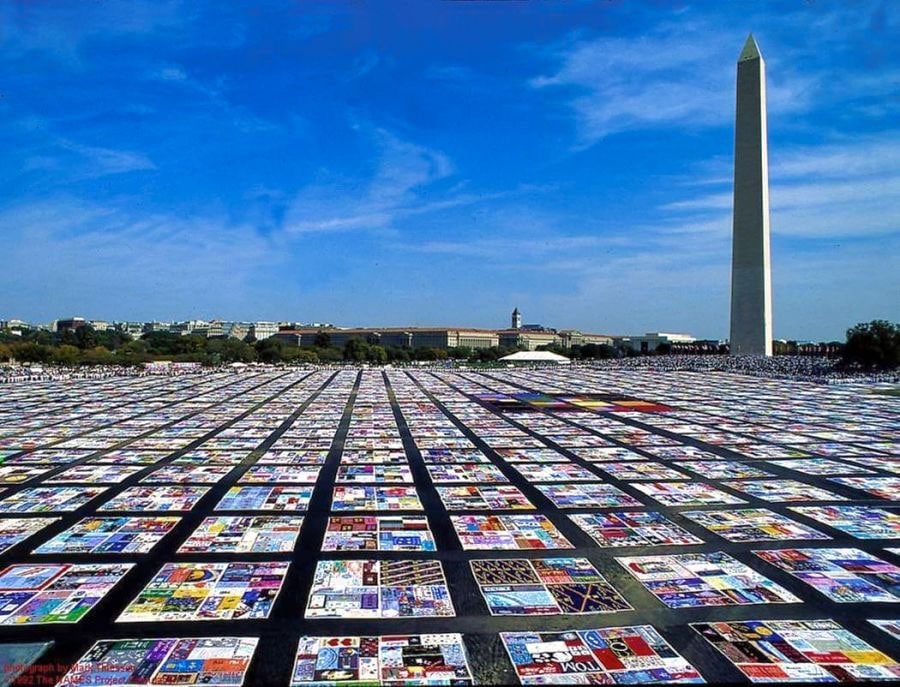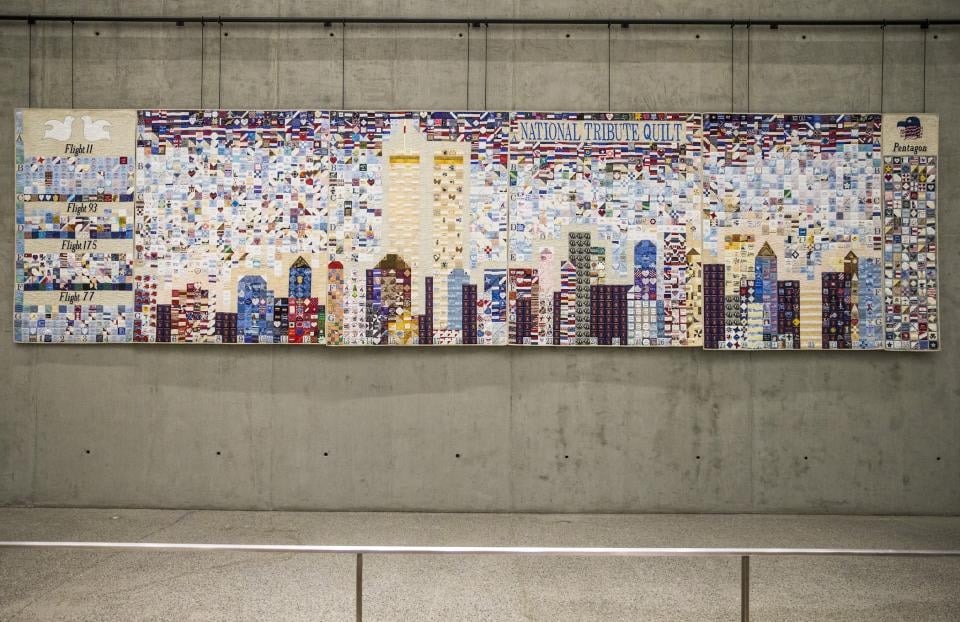Graveyard Quilts for Mourning
By Judy Anne Breneman, womenfolk.com
Before modern medicine the loss of beloved friends and family members was all too familiar. Childbirth was dangerous and it was a rare mother who didn’t lose one or more children. Husbands were lost through war or accident. Bereavement was a part of everyday life.
Ways Quilts Were a Comfort in Grief

There was little that could be done in the face of many diseases. We tend to hope that families were able to cope with these losses better than we do today. After all, families of the past would have been so much more familiar with losing loved ones. But old letters and diaries tell that the pain of grief is timeless.
Quilts could offer some small comfort in these times of grief. One elderly woman remembers her mother getting some precious blue silk out of her own hope chest when a neighbor’s baby died. “Mama and three other women set up the frame and quilted all day. First they quilted the lining for the casket, and then they made a tiny little quilt out of the blue to cover the baby.” If there was no wood for a coffin as occurred at times when pioneers were traveling west, the deceased might have been wrapped in a quilt replacing the coffin.
Quilts have also been used in the laying out of the deceased for viewing. Other times quilts were used to drape the coffin during the funeral service. The quilt used might have been a lovely family quilt or a special quilt owned by the church. In all these situations, quilts served to convey a sense of comfort, and when family quilts were used, a sense of connection to the deceased’s beloved family.
Quilts Made in Memory of Those Who Passed On

Another way quilts provided comfort for the grieving was through memorial quilts made to remember the deceased. Many such quilts contained bits of clothing that had belonged to the lost loved one. Sometimes the quilt was made in the form of a friendship quilt with inscriptions by friends and family. The very act of working on such a quilt would have been a healing activity for bereaved women. The finished quilt became a comforting memory.
In the nineteenth-century, Baltimore women made beautifully appliqued album quilts. Some were made in memory of soldiers who died in the Mexican-American war. Diane Schweier Krail writes of a deathwatch quilt made by the women in a Baltimore area family. This elaborate album quilt was made over several months during the family patriarch’s final illness. The author tells us this quilt displays many symbols of mourning, “Floral symbolism on the quilt includes laurel for eternity, acorns for immortality, and roses for the frailty of life …”
Precious Photographs Perhaps With a Quilt
During the Victorian Era, a deceased child may have been photographed so that family would have a picture to help them remember their lost little one. Such a picture might show the child in bed as if asleep under a beloved quilt. In many of these pictures the child is holding flowers or a favorite toy. Looking at the picture parents could imagine the child was simply sleeping, perhaps overseen by loving angels.
Quilts Can Still Sooth The Grieving Today
An example of modern use is found in the following quote from Lorrie Starr Crawford –
My Mother passed away in February. While my sisters, brother & I were making the funeral arrangements, I hit upon the idea to cover her casket with an old green and white quilt that Mother had worked on nearly 20 years. She pieced and pieced (by hand of course) all the time we were growing up. The quilt finally was quilted 15 years ago, again by hand. This time, everyone in the family had a seat at the frames while they visited. Somehow it seemed right that this “family project” should cover her while she “rested” during the service.
At the end of the service, my sisters and I came up to the casket and folded the quilt. Then we presented it to my brother for him to take home.
The AIDS Memorial Quilt
The National AIDS Memorial, aidsmemorial.org

Thirty-two years ago a group of strangers gathered at a San Francisco storefront to remember the names and lives of their loved ones they feared history would forget – and with that seemingly simple act of love and defiance, the first panels of The AIDS Memorial Quilt (The Quilt) were created and The NAMES Project Foundation (NPF) created.
Three years later and just a few miles away in Golden Gate Park, another small group of San Franciscans, also representing a community devastated by the AIDS epidemic, restored Golden Gate Park to create a serene place where people seeking healing could gather to express their collective grief through a living memorial, an AIDS memorial, which is now known as the National AIDS Memorial.
The public response to both of these initiatives was fervent because for the first several years into the epidemic, the stigma surrounding AIDS meant there was no formal recognition of it as a national tragedy. There were no formal commemorations for those who had died as would typically occur in response to the loss of lives on such a mass scale.
The ever-growing Quilt, begun in 1987, is comprised of nearly 48,000 three-foot by six-foot fabric tributes to more than 100,000 loved ones lost to AIDS. Considered the largest community art project in history, The AIDS Memorial Quilt is a powerful and colorful reminder of the names and faces behind the statistics. It tours the nation and the world, helping dispel fear and stigma while offering solace to millions.
Sections of the quilt, now housed where it all began in San Francisco, continue to be placed on exhibit around the country. For a list of upcoming showings, visit aidsmemorial.org
Quilting in Response to 9/11
Overwhelmed by grief, fear, and anger in the wake of 9/11, people around the world searched for ways to help. For those unable to participate in the rescue and recovery efforts at the attack sites, quilt making became an option for offering practical, creative, and symbolic consolation to, and support for 9/11 family members, responders, survivors, and others who were directly affected by the attacks.
“I didn’t know what to do, think, even feel,” recalled Sarah Roberts, the maker of a quilt featuring a bouquet of white roses tied with red, white, and blue ribbon and titled To New York, Washington and anyone who lost someone today. (shown below) “The only thing I felt entirely sure of was sadness, and compassion for those who lost their lives and loved ones.”
“I wanted to put flowers on a sidewalk memorial,” said Roberts of her quilt, which is one of more than 150 in the collection 9/11 Memorial Museum. “To remember the dead and comfort the living.”

The National Tribute Quilt
A 30-foot long quilt created by four women in response to 9/11 was donated to the 9/11 Memorial Museum and is now on view. The National Tribute Quilt is among the new installations in the Museum’s Tribute Walk, an area for large-scale works of art created in the aftermath of 9/11. The 8-foot tall quilt contains nearly 3,500 fabric squares created by people in all 50 states and five countries. Stitched together, the squares depict the New York City skyline with the Twin Towers. The quilt also represents the Pentagon and the four flights hijacked on 9/11.




Related posts: